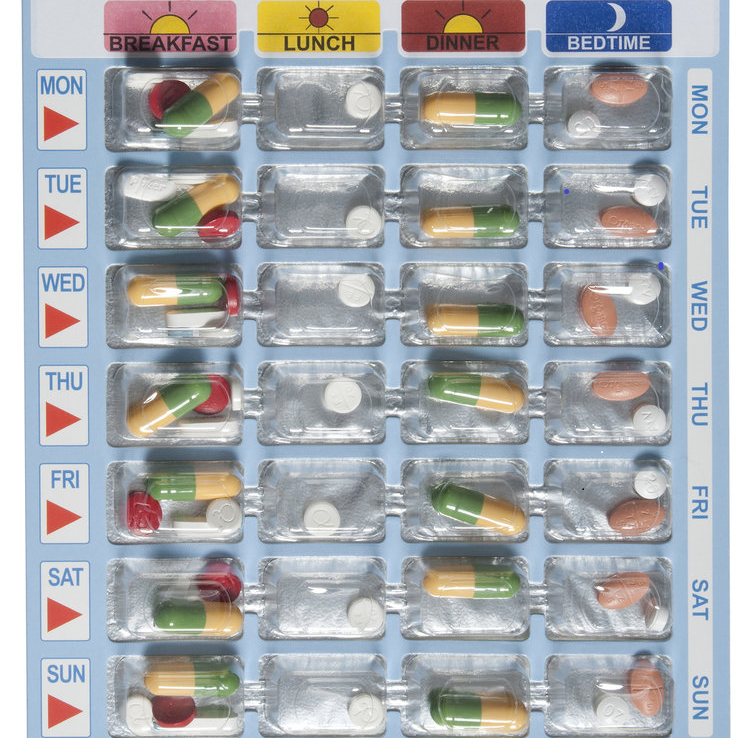Introduction
Compliance packaging organizes daily medications into bubbles or pouches. Compliance packaging can help people with cognitive impairments or complex medication schedules and organizing medications by time of day and day of the week makes a medication schedule safer and more manageable.
High-risk processes accounted for 28 per cent of reported incidents in Manitoba. Because of its complexity, compliance packaging is a high-risk process. It can involve many pharmacy team members and steps. This complexity increases the risk of a medication incident.
Medication incidents in Manitoba tended to happen under the following circumstances:
- A new medication was added to the patient’s schedule.
- A patient’s medication dose was changed.
- A patient was taking compliance-packaged medications and non-compliance-packaged medications at the same time.
- When there were insufficient refills.
The types of errors included
- Dose omissions
- Incorrect medications
- Mix-ups between medications included in the compliance package and those in separate vials
Incident Examples from the National Incident Data Repository for Community Pharmacies
Medication incidents that happen during compliance packaging processes can happen to anyone. The following incident examples show how easily incidents can occur:
Manitoba Community Pharmacy Incident Example:
Order Entry
A patient received a new medication part-way through the compliance pack period. The patient could not bring the compliance pack to the pharmacy for modification. Pharmacy staff provided the new medication in a separate vial and had it delivered to the patient. When pharmacy staff prepared the patient’s next compliance pack fill, they missed adding the new medication.
Potential contributing factors:
- Addition of a new medication in the middle of a blister pack cycle.
- Lack of verification with the most up-to-date prescription for each medication in the blister pack.
Community Pharmacy Incident Reporting Program Incident Example:
Packaging Process
A patient received a blister pack that did not have the correct medications in each slot/blister. The doses of atorvastatin and rabeprazole were both doubled in the bedtime slot for Saturday. Both medications were missing in the bedtime slot for Sunday.
Potential contributing factors:
Blister packs remain open during medication filling until final sealing. This can lead to
- the inadvertent placement of a medication in the wrong slot (risk increases when the number of medications increases); and
- medications ‘jumping’ between slots during the process of sealing the blister pack.
3 Tactics for Safely Preparing Compliance Packaging
You can make compliance packaging processes in your pharmacy safer today. Here are three simple tactics for safer compliance packaging:
- Verify the printed compliance pack label (or medication administration record [MAR]). Compare label or MAR with the most up-to-date prescription for each medication.
- Develop a standardized procedure for adjustments in the middle of a compliance pack cycle. Incorporate your procedure into your pharmacy’s policy and procedure manual and train staff on the process. Your procedure may include:
- Make the change in the compliance pack label as soon as you receive a new prescription. Set an alert in the system to remind staff of the change when the pharmacy refills the compliance pack.
- Repackage the existing compliance pack to reflect the modified regimen whenever possible. Or ask the prescriber if you can start the medication change when you dispense the next compliance pack.
- Communicate dose changes to the patient and caregiver using the repeat-back method. Highlight the change on the compliance pack label for visibility during administration.
- Communicate dose changes to the patient and caregiver using the repeat-back method. Highlight the change on the compliance pack label for visibility during administration.
3. Conduct an independent double check. Compare the medications in the compliance pack with the compliance pack label and the medication stock bottles.
Any compliance packaging process can lead to a medication incident. As the medication incident examples show, compliance packaging incidents can happen to anyone. Reviewing your pharmacy’s process is an important part of incident prevention. The Drug Distribution and Storage Practice Direction provides more information about what your compliance packaging policy and procedures must contain.



